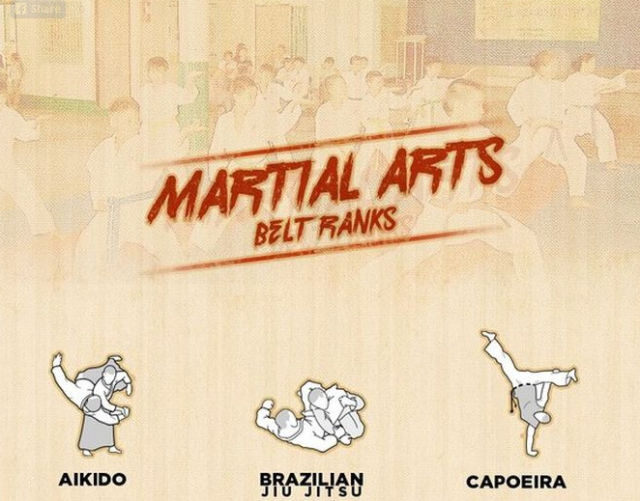Discover The Appealing Realm Of Martial Arts, Where Age-Old Customizeds Blend With Modern Effectiveness
Discover The Appealing Realm Of Martial Arts, Where Age-Old Customizeds Blend With Modern Effectiveness
Blog Article
Short Article Written By-McGrath Henson
Step into the old world where martial arts were born out of necessity in varied areas. Societies crafted distinct battling styles linked with historical contexts. Strategies evolved over centuries through committed method and cultural exchanges. Today, contemporary martial arts blend standard components for maximum effectiveness. Philosophically, martial arts stress discipline, self-improvement, and harmony. Regard, humility, and balance are fundamental principles assisting specialists in the direction of development and resilience. Check out the midsts of this rich background and ideology to reveal the profound impacts forming this long-lasting discipline.
Origins of Martial Arts
Martial arts originated in numerous areas around the world, advancing as functional fight systems to resist risks. These ancient battling styles were established out of need, with each society crafting strategies matched to their unique settings and difficulties. From the grappling arts of Jujutsu in Japan to the striking methods of Kung Fu in China, martial arts were deeply linked with the historical, social, and cultural material of their particular societies.
In Japan, the samurai course polished martial arts like Kenjutsu, the art of the sword, which later on advanced right into the much more promoted type of Kendo. On the other hand, in Brazil, Capoeira became a mix of dance and fight, produced by enslaved Africans as a means to resist injustice. Each martial art brings with it a rich background and viewpoint, reflecting the values and beliefs of individuals who practiced them.
As you delve into the beginnings of martial arts, you uncover a tapestry of human ingenuity, resilience, and the stubborn spirit of warriors throughout time.
Evolution of Methods
With centuries of practice and refinement, fight methods within numerous martial arts have actually undertaken an extensive advancement. From ancient styles like Kung Fu and Martial arts to more modern-day self-controls such as Brazilian Jiu-Jitsu and Krav Maga, the evolution of methods has actually been driven by a mix of social influences, useful applications, and technological advancements.
Suggested Resource site of this development is the cross-pollination of methods between different martial arts. For example, techniques from typical Japanese Jiu-Jitsu were integrated right into the creation of Judo by Jigoro Kano in the late 19th century. This mixing of designs has resulted in the advancement of hybrid martial arts like Mixed Martial Arts (MIXED MARTIAL ARTS), which incorporate elements of striking, grappling, and entry techniques.
In addition, the development of methods has been formed by the increasing emphasis on effectiveness and efficiency in battle. Specialists have constantly sought to improve their strategies through rigorous training, experimentation, and competitors, causing the development of very specialized and reliable combating styles. Overall, the development of methods in martial arts reflects the vibrant nature of battle and the recurring pursuit for renovation and technology.
Philosophical Structures
Exploring the underlying philosophical concepts of martial arts offers understanding into their core values and guiding ideas. At the heart of many martial arts techniques is the principle of discipline itself. By training your body and mind to act as one cohesive device, you cultivate self-control that expands beyond the dojo or fitness center right into everyday life. This self-control encompasses respect, humbleness, and self-discipline, forming not simply your physical abilities however also your character.
kung fu near me for adults in martial arts is the concept of continual self-improvement. The trip of understanding a fighting style is nonstop, with practitioners continuously striving to far better themselves, both literally and emotionally. This focus on development fosters strength, willpower, and a growth way of thinking that can be applied to all elements of life.
Furthermore, martial arts highlight the relevance of harmony and balance. Methods are developed to make use of an opponent's energy against them, highlighting the principle of generating and rerouting pressure rather than meeting it head-on. This philosophy extends to interpersonal relationships, promoting serene resolutions and mutual understanding. By embracing these thoughtful structures, martial musicians not just improve their combat abilities yet likewise cultivate a way of living fixated individual development, regard, and harmony.
Conclusion
Finally, the history and viewpoint of martial arts provide a rich tapestry of practice, self-control, and self-improvement.
Consider example the story of Bruce Lee, that changed martial arts by blending various styles and approaches to produce his very own distinct kind of Jeet Kune Do.
Via devotion and advancement, martial artists remain to push boundaries and motivate others to reach their full possibility both in combat and in life.
